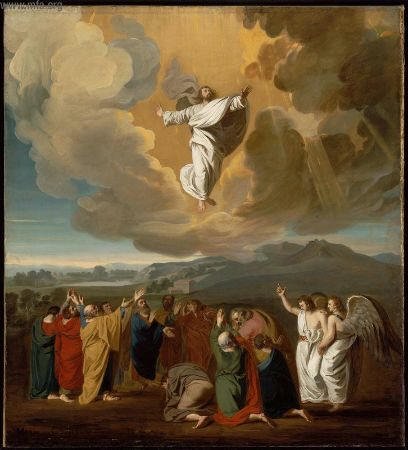Aren’t Many Old Testament Numbers Wrong?
Aren’t Many Old Testament Numbers Wrong?

Among the particularly hard sayings of the Bible are those portions that record large numbers, such as those in census lists in the early periods of Israel’s history or in numbers coming from the battles of that nation in her latter years.
The transmission of numbers in ancient documents was especially susceptible to textual error due to the fact that the systems were so diverse and with little standardization between cultures or periods of history in the same nation or culture.
In the Old Testament documents now available to us, all the numbers are spelled out phonetically. This is not to say, however, that a more direct numeral system or cipher notation was not also in use originally for at least some of these numbers. While no biblical texts with such a system have been found, mason’s marks and examples of what may well be simple tallies have been attested in excavations in Israel.
The only numbers that we have found in epigraphical materials uncovered by the archaeologists are those that appear on the earliest inscriptions known as the Gezer Calendar, the Moabite Stone, the Ostraca from Samaria and the Siloam Inscription of Hezekiah. There the numbers are either very small in magnitude, from 1 through 3, or they are written out phonetically.
Some numbers should never have been introduced into the discussion whatsoever, for they come from modern additions not found in the text themselves. Thus, one thinks first of all of the 1,656 years that allegedly elapsed from the creation to the flood according to the Hebrew manuscripts, while the Greek Septuagint has 2,242 years and the Samaritan texts have 1,307 years.
The fact that the Samaritan text has deleted one hundred years from Jared and Methuselah, and one hundred plus another twenty-nine years from Lamech’s age, at the time of the birth of their firstborn, is consistent enough to signal perhaps a transcriptional problem in copying from one text to another. Meanwhile, the Septuagint adds another one hundred years to the ages of Adam, Seth, Enosh, Kenan, Mahalalel and Enoch at the birth of their firstborn, while with Lamech they add only six more years.
In giving the tally for the rest of the lives of these same six antediluvians, they deduct the same one hundred years. The Hebrew and Greek texts agree on the figures for total years lived (if one were to do what the text never does, that is, add them up), except for a four-year difference in the life of Lamech. The Samaritan text, however, only gives a total of 720 years to Methuselah, while the Hebrew text would add up to 969 years total.
The differences between the three texts are so regular that the mistakes are more easily explained if the copyist was working from some direct numeral cipher system that used a system of marks rather than phonetically spelling out these numbers.
Similar problems occur elsewhere. For example, some texts say that the number of persons that were on board with Paul when he was shipwrecked was 276, but a few manuscripts read 76. Likewise, the famous 666 number of Revelation 13:18 is found in a few manuscripts as 616. In the Old Testament, the death of 50,070 male inhabitants of Beth-shemesh for irreverent treatment of the ark of God (1 Sam 6:19) is better put, as some manuscripts have it, at 70, since the town hardly even came close to having 50,000 inhabitants at this time.
Not all the large numbers in the Bible are as easily handled as the ones just surveyed. The number of warriors in Israel twenty years and older would seem to imply that the population that came out of Egypt and wandered in the wilderness for forty years exceeded two million people. This has given rise to a number of attempts to reduce this number and to serve as a model for treating similar claims in the Bible.
One of the most famous is to take the Hebrew word ˒elep̄, usually translated “thousand,” and to translate it instead as “family,” “clan” or “tent-group.”1 If the word were so rendered in Numbers 1 and Numbers 26, it would yield a total of only 5,000 or 6,000 men of fighting age, instead of 603,550.
It is true, of course, that the word can be used that way, for Judges 6:15 reads, “my clan (˒elep̄) is the weakest in Manasseh.” But the problem with this attempted reduction is that it only creates more problems elsewhere in the text. For example, in Exodus 38:25–26, where a half-shekel was to be given for each of the 603,550 warriors above the age of twenty years old, the amount given was 100 talents and 1,775 shekels.
There are 3,000 shekels to a talent, therefore 3,000 times 100 equals 300,000, plus 1,775 equals 301,775. Given the fact that each male over twenty was to be valued at a half shekel, 301,775 times 2 equals 603,550, a number matching that of Numbers 1:46, or similar to the number at the end of the march in Numbers 26:51 (601,730 men).
Therefore, if the problem is solved at one end as “family units,” it is only made worse elsewhere—in this case in the list of materials for the tabernacle; therefore, 603,550 warriors is the correct number and the nation probably numbered around two million.
Some of the most notorious discrepancies in biblical numbers are to be found in the postexilic era, particularly in Chronicles. Most nonevangelical interpreters feel the Chronicler’s numbers are impossibly high. It is this fact, more than any other, that has made the Chronicler’s work so suspect in the eyes of many modern exegetes. There are some 629 specific numbers that occur in 1 and 2 Chronicles.2
A typical example would be the number of Jehoshaphat’s army. Second Chronicles 17:14–18 details the fighting personnel in five groups of 300,000, 280,000, 200,000, 200,000 and 180,000, which add up to give an army of 1,160,000 men. This many scholars thought to be excessive. But there are no other comparative figures with which to judge the authenticity of this number except what moderns regard as “excessive.”
More serious are those texts where we do have parallel figures. Some noteworthy examples include: 1 Chronicles 19:18 has “7,000 chariots” whereas 2 Samuel 10:18 has “700”; 1 Kings 4:26 has “40,000 stalls,” but 2 Chronicles 9:25 has “4,000”; 2 Kings 24:8 declares “Jehoiachin was eighteen years old,” while 2 Chronicles 36:9 assures us “Jehoiachin was eight years old.”3 It is clear in each of these examples that there is a transcriptional error that represents a primitive error in one or more of the families of manuscripts of the Hebrew texts.
The conclusion of J. Barton Payne is that “in the eleven cases of disagreement over numbers that have arisen between the MTs of Chronicles and of Samuel/Kings because of copyists’ errors, Chronicles is found to be correct in five cases, incorrect in five, and one remains uncertain.”4
One more outstanding example of some unreconciled numbers in parallel lists can be seen in Nehemiah 7 and Ezra 2.5 Thirty-three family units appear in both lists with 153 numbers, 29 of which are not the same in Ezra and Nehemiah. Once again, it may be said that if a cipher notation was used with something like vertical strokes for units, horizontal strokes for tens, and stylized mems (the initial letter in the Hebrew word mē˒ah—“hundred”) for hundreds, then the scribe miscopied a single stroke. Most of the differences, on this supposition, would involve a single stroke.
There is also the real possibility that the different circumstances under which the count was taken affected the numbers. Ezra’s list was made up when the people were assembling in Babylon, while Nehemiah’s was drawn up in Judea after the walls of Jerusalem had been built. Thus many could have changed their minds while others may have died in the meantime. In the end the matter is as Allrik stated it: “while at first glance these textual-numerical differences may seem detrimental, actually they greatly enhance the value of the lists, as they bring out much of their real nature and age.”6
1 The first one to have suggested this is Sir W. M. Flinders Petrie, Egypt and Israel (London: SPCK, 1911), p. 42. It was picked up and recycled by G. E. Mendenhall, “The Census Lists of Numbers 1 and 26,” Journal of Biblical Literature 77 (1958): 52–66.
2 The most recent work on the numbers of these passages from a conservative side was by J. Barton Payne, “The Validity of the Numbers in Chronicles,” Bibliotheca Sacra 136 (1979): 109–28, 206–20; Payne, “The Validity of the Numbers in Chronicles,” Near East Archaeological Society Bulletin New Series 11 (1978): 5–58.
3 Note the important study by John W. Wenham, “Large Numbers in the Old Testament,” Tyndale Bulletin 18 (1967): 19–53.
4 J. Barton Payne, “1, 2 Chronicles,” in The Expositor’s Bible Commentary, vol. 4, ed. Frank E. Gaebelein (Grand Rapids, Mich.: Zondervan, 1988), p. 311. Note especially his Appendix A on p. 561, “Numbers in Chronicles That Disagree with Their Old Testament Parallels,” and Appendix B on p. 562, “Numbers over 1,000 Unique to Chronicles.” See also Payne, “Validity in Numbers,” Bibliotheca Sacra, p. 126. Payne opined that out of the 629 numbers in 1 and 2 Chronicles, only the figures in 1 Chronicles 22:14 and 29:4, 7, listing the precious metals offered for Solomon’s temple, might one need to resort to an explanation of special providence.
5 See H. L. Allrik, “The Lists of Zerubbabel (Nehemiah 7 and Ezra 2) and the Hebrew Numerical Notation,” Bulletin of the American Schools of Oriental Research 136 (1954): 21–27.
6 Ibid, p. 27.
Kaiser, W. C., Jr., Davids, P. H., Bruce, F. F., Brauch, M. T., & Kaiser, W. C. (1997). Hard sayings of the Bible (51). Downers Grove, Il: InterVarsity.

